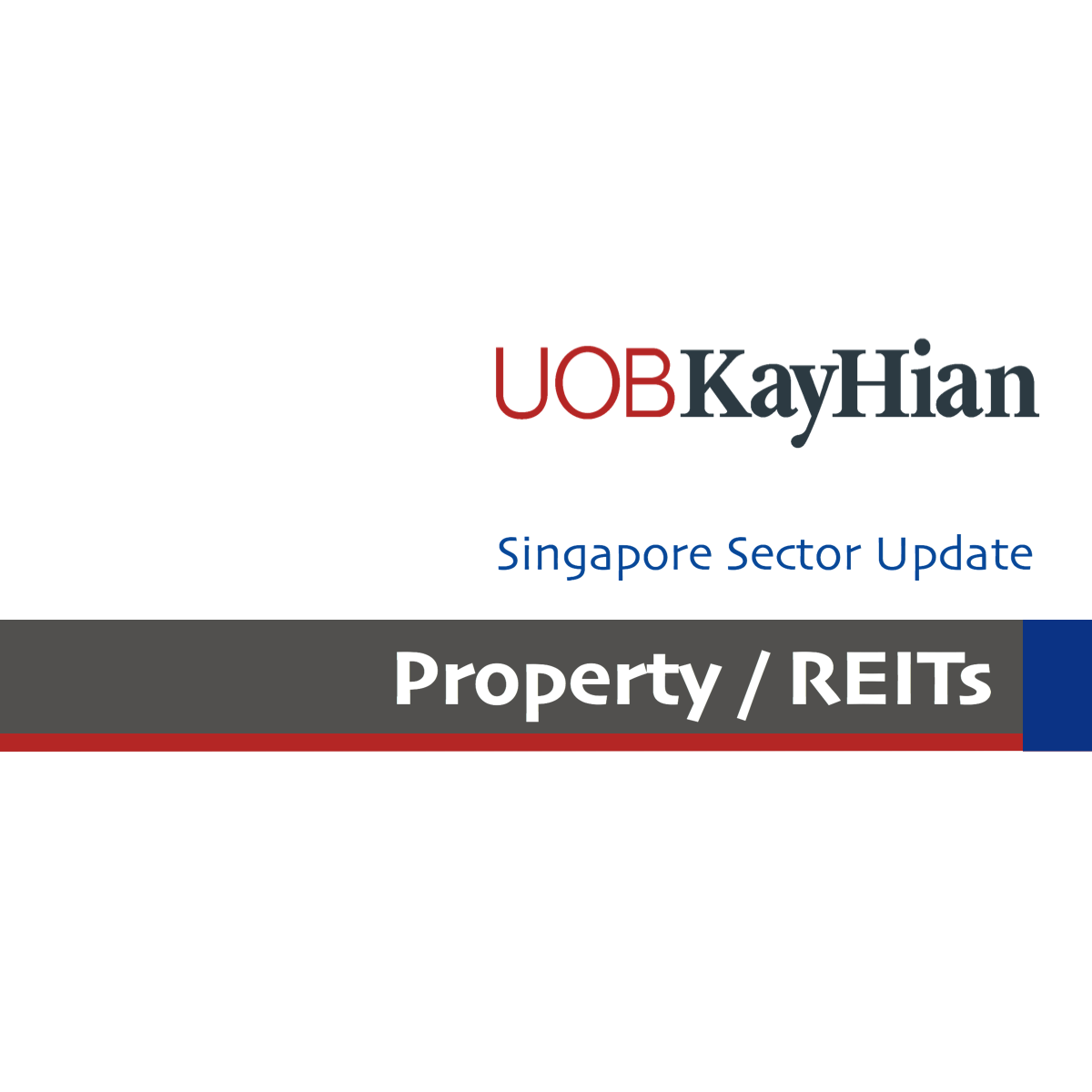 Singapore REITs
S-REITs
REIT ETFs
SG Budget 2018
CDL HOSPITALITY TRUSTS
J85.SI
CAPITALAND COMMERCIAL TRUST
C61U.SI
ASCENDAS REAL ESTATE INV TRUST
A17U.SI
Singapore REITs
S-REITs
REIT ETFs
SG Budget 2018
CDL HOSPITALITY TRUSTS
J85.SI
CAPITALAND COMMERCIAL TRUST
C61U.SI
ASCENDAS REAL ESTATE INV TRUST
A17U.SI
Singapore REITs - Proliferation Of REIT ETFs To Boost S-REITs
- Improved tax transparency treatment of REIT ETFs is expected to boost the yield and proliferation of the instrument.
- Key constituents of FSTREI and REIT ETFs, such as Ascendas REIT, Suntec REIT, Capitaland Mall Trust, CapitaCommercial Trust and Mapletree Commercial Trust, are likely to see a surge in valuations, buoyed by increased proliferation of REIT ETFs.
- We remain OVERWEIGHT on REITs.
WHAT’S NEW
- As announced in the Singapore Budget 2018, tax transparency treatment for S-REITs will soon be extended to exchange traded funds (ETF) invested in REITs. Qualifying foreign corporate individuals will also enjoy a 10% concessionary tax rate (vs the current 17%) on REIT ETFs’ distributions received.
- The tax concessions for REIT ETFs will take effect on or after 1 Jul 18, with a review date of 31 Mar 20. More details of the change will be released by the MAS and IRAS by Mar 18.
ACTION
- Maintain OVERWEIGHT, as REITs’ valuations are expected to be supported by increased fund flow into REIT ETFs.
- CDREIT, CCT and AREIT remain our top picks.
ESSENTIALS
Level playing field between REIT ETFs and S-REITs after tax concessions.
- With the tax transparency treatment, distributions from S-REITs to ETFs will no longer be subjected to a 17% withholding tax for individuals.
- For foreign corporate individuals, the government also introduced a 10% concessionary tax rate on REIT ETFs’ distributions (on a par with the tax rate they pay on REITs’ distributions). Effectively, tax leakage is being addressed (ie no more difference between investing in REIT ETFs and directly in REITs).
Proliferation of REIT ETF-based products supported by enhanced yields and wider investor base.
- The extension of tax transparency to REIT ETFs will significantly enhance ETFs’ yields, which yield an average of 4% p.a. after management fees (vs 6% by SREITs).
- The move to introduce a 10% concessionary tax on REIT ETFs (on a par with tax rates on S-REITs’ distributions) for foreign corporate investors will also increase its appeal to foreign investors and widen the investor base.
Key constituents of FSTREI and ETFs set to benefit as REIT ETFs gain traction as tax-efficient vehicle to assess S-REITs.
- We foresee that with more REIT ETFs coming through, they will be replicated based on existing S-REIT indices, like the FSTREI.
- Within the FSTREI index, key constituents include Ascendas REIT (11.8% weighting), Suntec REIT (9.5%), Capitaland Mall Trust (8.8%), CapitaCommercial Trust (7.8%) and Mapletree Commercial Trust (5.7%).
- The same key picks are also represented among the top holdings of existing REIT ETFs combined, including Nikko AM-Straits Trading exJapan REIT ETF, Lion-Phillip SREIT and Phillip SGX APAC Dividend Leaders REIT ETF.
- We opine that the proliferation of ETF REITs into the S-REITs space will bring about more fund flow, thereby supporting valuations of key constituent names.
Continuation of Singapore’s supportive stance on REITs.
- From the birth of Singapore’s 1st REIT, CapitaLand Mall Trust, in Jul 02, the state has enacted policies to spur REIT growth, starting with the application of tax transparency onto REITs with 90% of the distributable income to be paid out to unitholders.
- We also saw this in 2003 when foreign-sourced income was exempted from tax.
- Budget 2005 saw stamp duty transfer of Singapore property removed in order to support asset rejuvenation and recycling in the SREIT universe. Withholding tax at the prevailing 20% rate then levied on corporate and institutional investors was slashed to 10%, in an ultimately successful attempt to garner significant foreign interest in Singapore’s REIT sector.
- In Sep 06, just before the FTSREI peaked in 2Q07, the government introduced tax exemption on foreign-sourced income.
Singapore continues to lead as an Asian REIT hub, buoyed by its competitive and clear tax regime.
- According to Bloomberg data, Singapore is second only to Japan in terms of REIT market capitalisation (US$55b vs US$110b) domiciled in Asia. Singapore has gained a head-start over other countries due to its clear regulatory and tax frameworks.
- China, despite having size to its advantage (REIT-able market potentially worth US$600b-1.8t, according to Guanghua School of Management report), has lagged behind in developing its REIT market. This is due to high costs faced by sponsors to transfer assets into a REIT, as well as enterprise income tax on transfer gains, business tax, land appreciation tax and stamp duties.
Going forward, we can also expect more US assets to form a larger part of the Singapore REITs market.
- The successful listing of Manulife US REIT has underlined a new structure that minimises a range of US taxes (such as withholding taxes levied on overseas dividend payments). The traction gained has already attracted Keppel-KBS US REIT to follow in its footsteps (by adopting a similar US sub-REIT structure). Two more of such listings are also in discussions, according to our channel checks.
- Other appeals to listing foreign assets in Singapore include the size and depth of the market providing ample liquidity. Some of the previously listed REITs with foreign assets also include Frasers Logistics and Industrial Trust (Australian properties) and BHG Retail REIT (Chinese assets).
- Singapore yield-spreads compelling at 3.58% compared to the region’s, offering 15% upside potential. Although current yields are below the historical average of 3.89%, this is significantly above the upcycle average of 2.79% (seen during 2004-08), signifying still significant upside potential for REITs as we head deeper into the upcycle.

Vikrant Pandey
UOB Kay Hian
|
Peihao Loke
UOB Kay Hian
|
http://research.uobkayhian.com/
2018-03-06
UOB Kay Hian
SGX Stock
Analyst Report
1.950
Same
1.950
2.090
Same
2.090
3.050
Same
3.050

